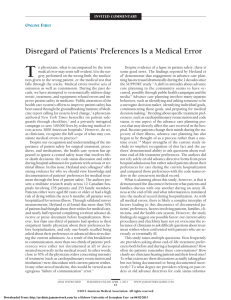InnoQuest-4-23-13 - The Entrepreneurs EDGE
advertisement
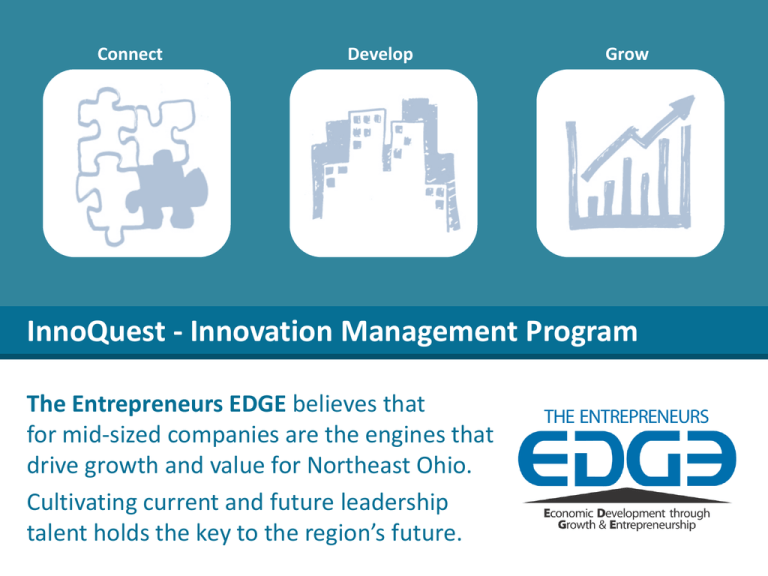
Connect Develop Grow InnoQuest - Innovation Management Program The Entrepreneurs EDGE believes that for mid-sized companies are the engines that drive growth and value for Northeast Ohio. Cultivating current and future leadership talent holds the key to the region’s future. InnoQuest – April 23, 2013 8:00 AM Welcome / Overview Short video excerpt – Gary Hamel (9 min. – Part 2) Reinventing Management for the 21st Century Leadership and Culture Peer Discussion Rainmaker Index / Building Innovation Teams Rose Noesges, Energizer Holding Co. @9:20 **Break** Hyland Software Tealla Scrofano and Alex Sheen Discussion Groups Action Steps / Evaluations @11:40 Tour of Hyland Software Program Overview Goals: Share best practices Foster new connections “Raise the bar “ Help companies in managing the innovation process • Feb. 7 Case for Innovation / Drivers of Innovation Nottingham-Spirk Design, Cleveland • April 23 Leadership and Culture Hyland Software, Westlake • June 19 Where and How to Innovate Austen Bioinnovation Institute in Akron (ABIA) • Aug. 6 Ideas to Implementation Parker Hannifin, Mayfield Heights • Oct. 3 Marketing and ROI TBD, GOJO, Goodyear, Eaton? • Dec. 3 Strategy and Planning ROI TBD, GOJO, Goodyear, Eaton? Saving /Sharing Files - DropBox Saving /Sharing Files Typical Barriers to Growth and Innovation • • • • • • • • • • • • Lack of Incentives “The Way We Always Have Done It” Attitude Management wants near-term success Too many silos Lack of customer focus Fear of failure It’s no one’s job Innovations are small relative to the core business. Afraid of cannibalizing successful businesses. Limited tolerance for unpredictable results. No career incentive to work on innovation/growth projects. Limited or no dedicated resources to innovation * Courtesy of Columbia Business School Nottingham-Spirk Design (2-7-13) Rose Noesges, Energizer Holding Co. Take-aways 2-7-13 • Innovation stories from Rose Noesges and John Nottingham. • The need to innovate/essential; embrace change. • Starting and ending innovation with the customer (client insights). Management 2.0. • Spending more time with customers to understand needs and how they use your product. • Take existing knowledge of customers with a grain of salt. Challenge beliefs. • Developing culture to embrace innovation Do not be afraid of failure or ambiguity. • Need to think about current innovation process differently. • Better to compete on value than on price. • Look at process and supply chain for savings and innovation (not just in the product). • Focus groups & brainstorming are not good places to start innovation. • Don’t throw innovation ‘over the wall’ to different groups. No ownership; will kill all ideas. • Have someone “own” innovation; find the right person who questions/can deal with ambiguity. What are the most important issues you face going forward? • Changing culture • Resources (time and $) Funding innovation on a shoe-string budget • Growing sales and servicing customer who wants everything yesterday • Developing an innovation management process • Building an acceptance for innovation/change within our company • Moving from Management 1.0 to 2.0 Since our last meeting …. Reinventing Management for the 21st Century Innovation Management – Three Gears Culture • Leadership • Customs, etiquette, attitudes, expectations • Talent Recruitment, Training, Development • Facilities / Environment Process • Resource Procurement ($, Energy, Time) • IP Portfolio Management • ROI & Assessment Strategy • • • • • What to innovate? Values Business Model Branding Drivers What is Corporate Culture? • Culture is enacted: Culture is continuously created by every member of your organization, through their day-to-day participation in the organization. It’s dynamic, shared, crowd-sourced; not static and unchanging. • Culture is “how we do things here.” It provides members with (largely unspoken) rules for how they should behave to gain and maintain social ‘membership’ in the organization. • Culture is manifested in a variety of ways, including: Language – shared words or labels your organization uses. Rituals – such as the summer BBQ, award ceremonies, etc. Dress code Decision making – how important organizational decisions are made and communicated Conflict resolution – how conflicts are expected to be handleddiscussed or avoided? Status - who is recognized and esteemed, both formally and informally? http://www.businessinsider.com/hrs-sloppy-thinking-on-culture-2013-1?utm_source=dlvr.it&utm_medium=linkedin “Culture Eats Strategy For Breakfast.” -- Peter Drucker “Culture Eats Strategy For Breakfast.” -- Peter Drucker No matter how far reaching a leader’s vision or how brilliant the strategy, neither will be realized if not supported by an organization’s culture. Self Assessment of Innovation Culture Culture Questions • What kinds of values are currently shown in the culture of your organization? • What kinds of values need to be shown in the culture of your organization in the future in order to be most effective? • What kinds of values are members of your organization actually rewarded for showing in behavior now? • What kinds of values do you expect your significant clients or customers would rate your organization as showing toward them? Typical Barriers to Growth and Innovation 10 Culture Building Principles 1) Communicate your dream and operationalize it. 2) Be clear about what you stand for, inside and outside your company. 3) Design your organization for what it needs to win. 4) Get your team right. 5) Champion innovation of all kinds. 6) Set your standards very high. 7) Train all the time. 8) Do a few symbolic things to create excitement about what is important. 9) Think like a winner, act like a winner. 10)Live your desired legacy. http://www.forbes.com/sites/martinzwilling/2012/03/03/10-ways-to-build-a-business-culture-like-apple/ Myers-Briggs Assessment SCALES ARE… • Gathering Information • Processing Information • Judging Information • Time to make decisions The Four Preferences • Extraversion or Introversion • Sensing or Intuition • Thinking or Feeling • Judgment or Perception There is no right / wrong or preferred type ! Source: Looking At Type: A Description of the Preferences Reported by The Myers-Briggs Type Indicator by Earle C. Page Myers Briggs Type Indicator • 1. the MBTI describes rather than prescribes; • 2. it pinpoints preferences and strengths; • 3. it puts all preferences on equal standing; • 4. it provides a framework to understand human behavior; and • 5. refrains from making judgments. SOME KEY WORDS • • • • • • • • E Extraversion Initiating Expressive Gregarious Active Enthusiastic Sociable People • • • • • • • • I Introversion Receiving Contained Intimate Reflective Quiet Inward Depth These Characteristics Often Develop From E And I Preferences—Some Of Them May Be True Of You S • • • • • • • • • • • • SOME KEY WORDS Sensing Concrete Realistic Practical Experiential Traditional Details Present Facts Sequential Repetition Literal N • • • • • • • • • • • • Intuition Abstract Imaginative Conceptual Theoretical Original Patterns Future Innovations Anticipation Inspiration Change These Characteristics Often Develop From S And N Preferences—Some Of Them May Be True Of You SOME KEY WORDS F T • • • • • • • • • • Thinking Logical Reasonable Questioning Critical Tough Justice Impersonal Precise Principles • • • • • • • • • • Feeling Empathetic Compassionate Accommodating Accepting Tender Harmony Appreciate Persuasive Values These Characteristics Often Develop From T And F Preferences—Some Of Them May Be True Of You SOME KEY WORDS J • • • • • • • • • • Judgment Systematic Planful Early Starting Scheduled Methodical Organized Control Decisive Deliberate P • • • • • • • • • • Perception Casual Open Ended Pressure Prompted Spontaneous Emergent Flexible Experience Curious Options These Characteristics Often Develop From J And P Preferences—Some Of Them May Be True Of You THE SIXTEEN TYPES By the use of inferential statistics, an estimate of the distribution found in the US population has been gathered. ISTJ ISFJ INFJ INTJ ISTP ISFP INFP INTP ESTP ESFP ENFP ENTP ESTJ ESFJ ENFJ ENTJ 2.4% 1.8% 11.6% 5.1% 4.3% 8.7% 13.8% 8.8% 8.5% 12.3% 1.5% 4.4% 8.1% 2.1% 3.3% 3.2% Each Of These Sixteen Types Is Gifted And Valuable For 20 in this group THE SIXTEEN TYPES 10% (2) By the use of inferential statistics, an estimate of the distribution found in the US population has been gathered. 5% (1) 15% (3) 10% (2) INFJ INTJ ISTJ ISFJ 11.6% 0% (0) 0% (0) 1.5% 5% (1) ISTP ISFP INFP 13.8% 0% (0) 8.8% 0% (0) ESTP 5.1% 4.3% 0% (0) ESTJ 8.7% 5% (1) INTP 0% (0) 3.3% 5% (1) ESFP ENFP ENTP 5% (1) 25% (5) 15% (3) ENFJ ENTJ 2.4% 1.8% 8.5% ESFJ 12.3% 4.4% 2.1% 8.1% 3.2% Each Of These Sixteen Types Is Gifted And Valuable MB Creativity Index: (3*S/N)+J/P-E/I-(0.5*T/F) Range: (400 to -150) Einstein end / Innovative Edison end / Adaptive Rainmaker Index (Range: -100 to 100) S/N – T/F “Fuzzy” front end Managing both sides Adapter Rose Noesges, Energizer Holding Co. Joe Yanoska, American Greetings Interactive How Great Leaders Inspire Action EDGE Fellows Summer Intern Program The Ideas • 45 business ideas studied • From NE Ohio established businesses, start-ups, and organizations. • 30% of projects generate new revenue for NEO. Connect Develop Grow InnoQuest - Innovation Management Program Next Meeting: Wednesday, June 19th Topic: “Where and How to Innovate” Austen Bioinnovation Institute in Akron

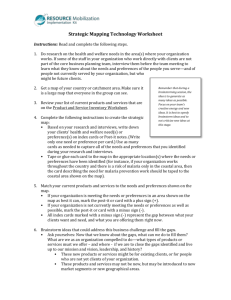
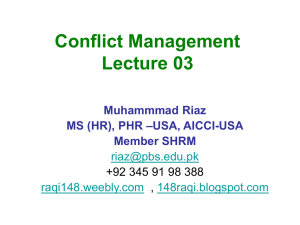
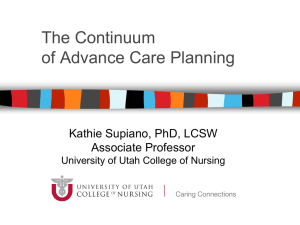
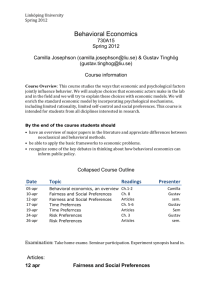

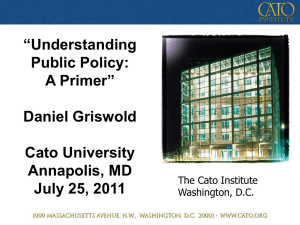
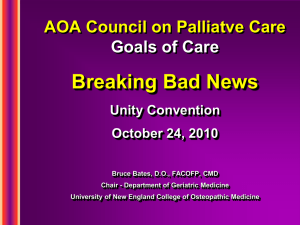
![SEM_1_-_2.03-2.04_and_2.06_PPT[1]](http://s2.studylib.net/store/data/005412429_2-ee09ccc3ae8bb5a8455b0fdbcc5543ae-300x300.png)

